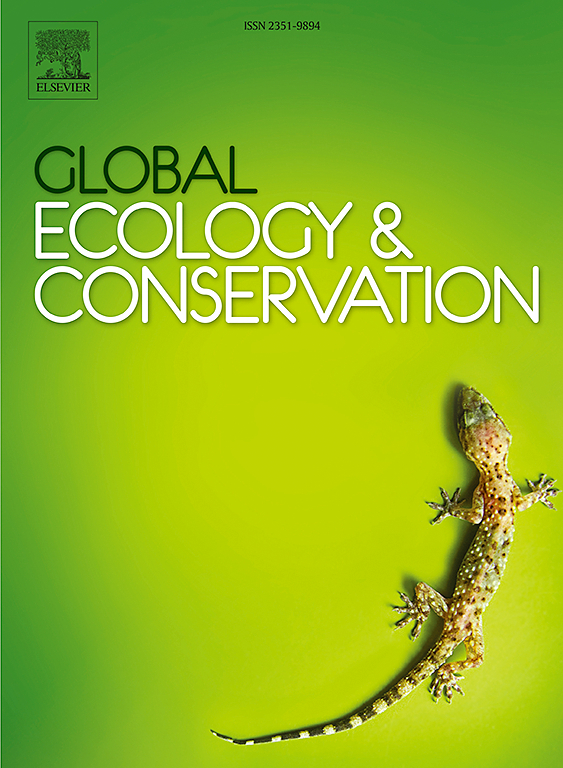基于自然保护区的跨境生态网络社区:亚洲湄公河流域案例研究
IF 3.5
2区 环境科学与生态学
Q1 BIODIVERSITY CONSERVATION
引用次数: 0
摘要
世界各地的自然保护区(NPAs)在保护地球生物多样性方面发挥着至关重要的作用。生态网络可用于识别自然保护区之间的密切联系。湄公河是东南亚最重要的国际河流之一,气候温和,水资源丰富,是全球生物多样性的热点地区,也是人口密集、宏观生态系统复杂的地区。本研究根据湄公河流域跨境生态系统的特点,提出了 "生态网络群落"(ENCs)的概念,并论证了其基本构建方法:首先采用最小累积阻力(MCR)模型构建基于NPAs的生态网络,然后应用Clauset-Newman-Moore(CNM)算法检测流域内的群落。研究结果表明,湄公河流域的生态网络中存在深层结构,且 ENCs 随时间的推移而变化。该研究深入探讨了跨境生态网络的复杂性,提供了一种有效的群落检测方法,并揭示了研究过程中观察到的 "群落合并效应"。研究强调了构建生态网络和基于社区的保护区管理的必要性,为跨国环境合作和面向复杂性的生态系统管理提供了新的方向。本文章由计算机程序翻译,如有差异,请以英文原文为准。
Transboundary Ecological Network Communities based on natural protected areas: A case study of the Mekong River Basin, Asia
Natural protected areas (NPAs) around the world play a crucial role in preserving Earth's biodiversity. Ecological networks can be used to identify the close connections between NPAs. The Mekong River, one of the most crucial international rivers in Southeast Asia, boasts a temperate climate and abundant water resources, serving as a hotspot for global biodiversity and a densely populated area with a complex macro-ecosystem. This study, based on the characteristics of cross-border ecosystems in the Mekong River Basin, introduces the concept of “Ecological Network Communities” (ENCs) and demonstrates its foundational construction methodology: firstly, the Minimum Cumulative Resistance (MCR) model is employed to construct ecological networks based on NPAs, followed by applying Clauset-Newman-Moore (CNM) algorithm for community detection within the river basin. The results of the study indicate the presence of deep structures within the ecological networks of the Mekong River Basin and ENCs are observed to exhibit variations over time. The study delves into the complexities of transboundary ecological networks, offering an effective methodology for community detection and uncovering the "Community Merging Effect” observed during the research. It emphasizes the need for constructing ecological networks and community-based management of protected areas, providing new directions for cross-national environmental cooperation and ecosystem management oriented towards complexity.
求助全文
通过发布文献求助,成功后即可免费获取论文全文。
去求助
来源期刊

Global Ecology and Conservation
Agricultural and Biological Sciences-Ecology, Evolution, Behavior and Systematics
CiteScore
8.10
自引率
5.00%
发文量
346
审稿时长
83 days
期刊介绍:
Global Ecology and Conservation is a peer-reviewed, open-access journal covering all sub-disciplines of ecological and conservation science: from theory to practice, from molecules to ecosystems, from regional to global. The fields covered include: organismal, population, community, and ecosystem ecology; physiological, evolutionary, and behavioral ecology; and conservation science.
 求助内容:
求助内容: 应助结果提醒方式:
应助结果提醒方式:


